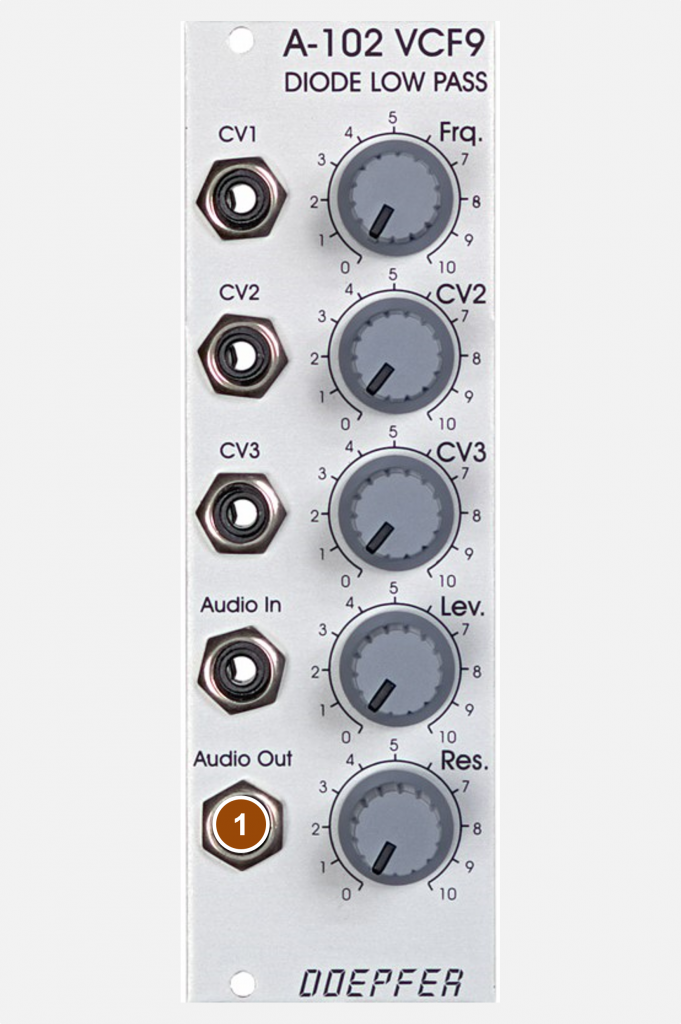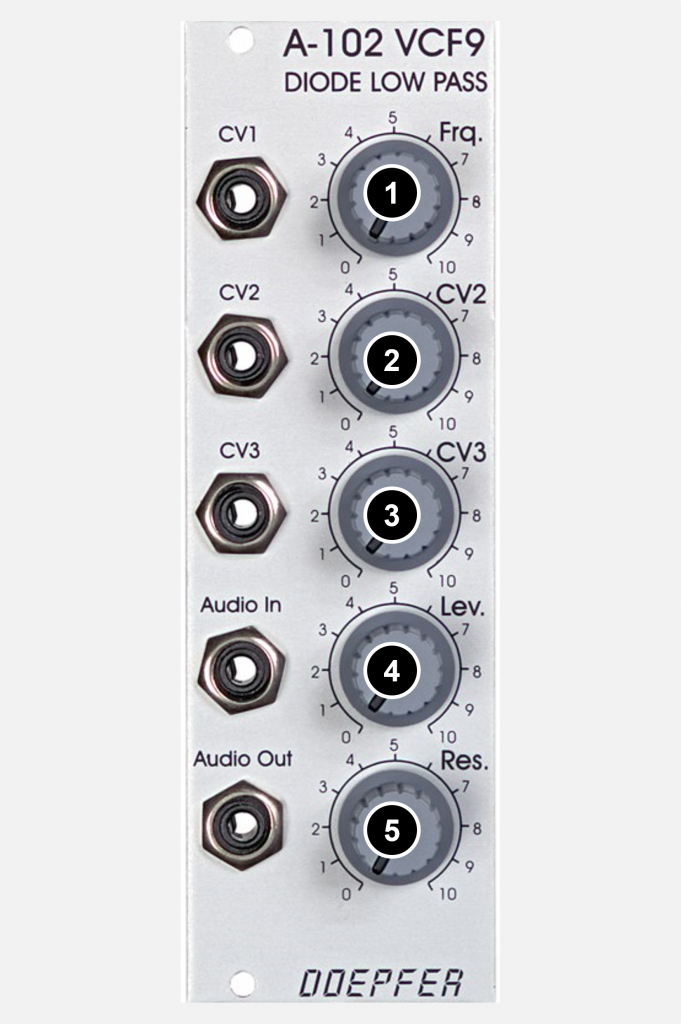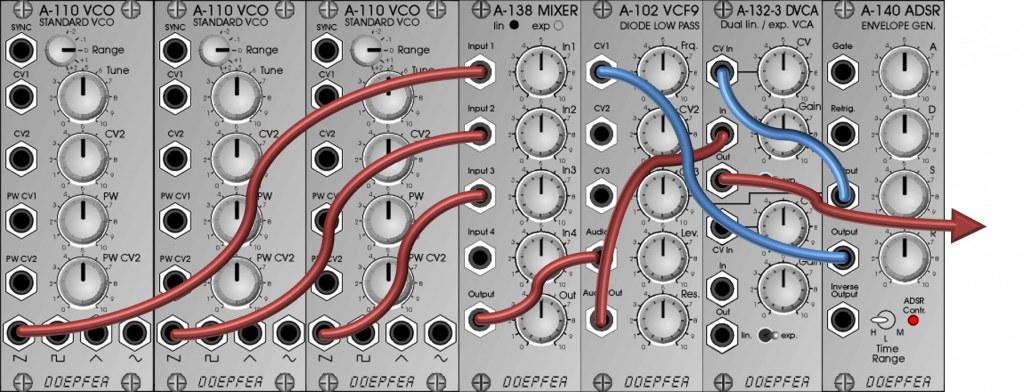The Doepfer Diode Low Pass Filter is a lowpass filter with a slope of 24 dB. In terms of technical structure, it is similar to a so-called “ladder filter” (which works with a “ladder” or cascade of transistors), such as the Moog low-pass filter. Instead of transistors, however, diodes are used, which make the filter sound completely different. Very British!
There are always “design pairs” at Doepfer that are similar in terms of functionality and sometimes even the layout of the front panels, but sound very different. Such siblings are e.g. the LP filter modules A-102, A-103 and A-120.
User interface
Inputs:

- CV1: Control voltage input for the cutoff-frequency (without attenuator).
- CV2: Control voltage input for the cutoff-frequency (with attenuator).
- CV3: Control voltage input for the cutoff-frequency (with attenuator).
- Audio In: Audio input for the material to be filtered.
Outputs:

- Audio Out: Output of the filter, here you can hear the filtered input signal.
Controls:

- Frq.: Controller for the cutoff-frequency.
- CV2: Attenuator for the control voltage input “CV2”.
- CV3: Attenuator for the control voltage input “CV3”.
- Lev.: Attenuator for the audio input.
- Res.: Controller for the resonance (self-oscillation) of the filter. Attention: The self-oscillation already starts at a control position of approx. “3”.
Possible uses
Bread & butter
The diode filter is a “bread and butter” filter suitable for everyday use, so it can be used almost anywhere where a good-sounding low-pass filter is required. At higher levels, the input can easily be overdriven (clipping) – this can be used to shape the sound.
No self-oscillation at low cutoff-frequency
The type of self-oscillation is the great feature of this filter: It sets in early but varies greatly in intensity across the frequency range. It is significantly louder at a high cut-off frequency – at low frequencies, the self-oscillation disappears completely, even with the “Res.” control turned all the way up. Unfortunately, this makes it difficult to use as an “electronic bass drum”. In that case, the A-105 SSM filter is more in demand.
Many possibilities for modulations
You should take the three modulation inputs for the cutoff-frequency as a friendly invitation: Complex modulations work very well with this filter. The “strange” resonance behavior also contributes to this (no self-oscillation when the filter is closed) – you always modulate the cut-off frequency and resonance at the same time.
Sound examples
-
A-102 / Sequence

The sawtooth output of three A-110-1 VCOs is used, one VCO is transposed 1 octave down. After the A-138b mixer, the signal enters the A-102 filter and then an A-132-3 VCA. Both VCA and filter are modulated by the same A-140 ADSR. Triggers for the ADSR and control voltage for the pitch of the sequence come from an A-155 / A-154 sequencer (not shown in the drawing). Sequence with three A-110-1 in the A-102.
Technical specifications
| Width | 8 HP |
| Depth | 60 mm |
| Power requirements | 30 mA (+12V) / -10 mA (-12V) |
